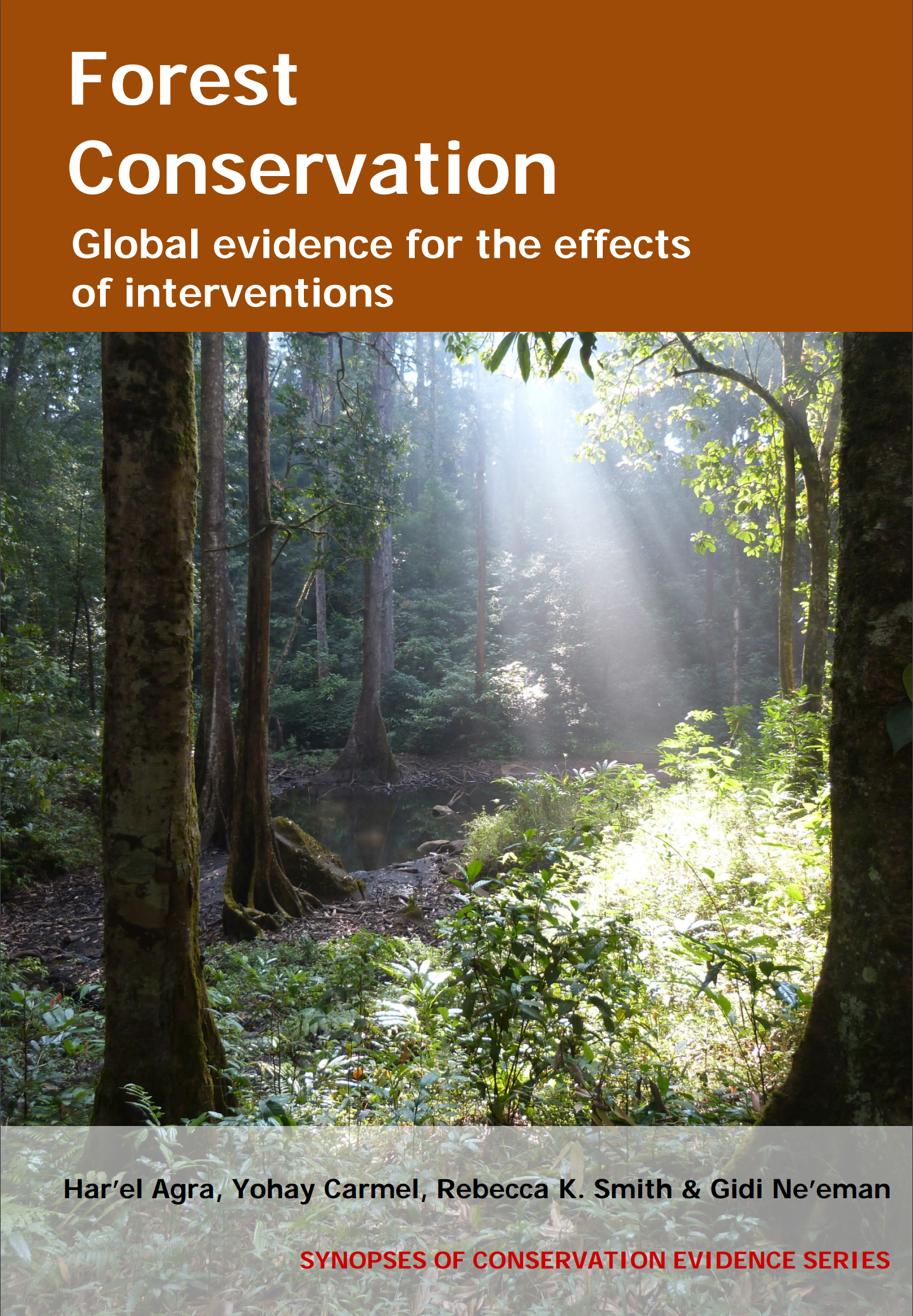Add organic matter
-
Overall effectiveness category Trade-off between benefit and harms
-
Number of studies: 4
View assessment score
Hide assessment score
How is the evidence assessed?
-
Effectiveness
45% -
Certainty
43% -
Harms
28%
Study locations
Supporting evidence from individual studies
A replicated, randomized, controlled, before-and-after study in 2004-2005 in subtropical forest in Brazil (Sampaio, Holl & Scariot 2007) found that addition of leaf litter increased species richness, but had no effect on the density of new trees. The change (after minus before) in number of species was higher in litter addition (litter addition: 1; control: 0/plot), while the change in new tree density was similar (litter addition: 1,000; control: 1,000/ha). Data were collected immediately before (January 2004) and one year after treatment (March 2005) in four replicates of adjacent control and leaf litter addition (about 10 cm of dry leaves) plots (10 × 10 m).
Study and other actions testedA replicated, controlled study in 1997-1999 in tropical forest in Costa Rica (Dupuy & Chazdon 2008) found that addition of leaf litter decreased the density of new tree seedlings in artificial forest gaps, but not under intact forest canopy. The density of new tree seedlings was higher in control (3.0/m2) than in litter addition plots (1.7/m2) inside gaps, but similar between treatments in intact forest (0.5/m2 in both). In 1997, large gaps (320–540 m2) were created inside five 40 × 40 m plots (gap plots) by cutting and removing all stems ≥5 cm diameter at breast height. Five other similar size plots (non-gap plots) were unmanipulated with respect to canopy cover. Five blocks were established within each plot, each comprised of two 2×2 m quadrats of each of litter addition and control treatments. Data were taken every two months for one year after treatments.
Study and other actions testedA replicated, controlled study in 2003-2005 in temperate coniferous forest in Arizona, USA (Stoddard et al. 2008) found that addition of pruned trees had mixed effects on cover of understory plant groups. Total understory plant cover was higher in the pruned trees treatment in seeded plots in site #1 (pruned trees: 12.4; control: 3.7%). Exotic-plant cover was lower in the pruned trees treatment in seeded (pruned trees: 0.1; control: 1.9%) and non-seeded plots (pruned trees: 0.2; control: 1.6%) in site #2. In both sites, in seeded plots, cover (pruned trees: 1.6-3.9; control: <0.2%) and seed-density (pruned trees: 7-28; control: 2-3/m2) of grasses was higher in pruned trees treatment plots. Total understory plant cover in site #2 (pruned trees: 11.7-16.3%; control: 11.0-16.1%) and in non-seeded plots in site #1 (pruned trees: 10.7; control: 8.1%) was similar between treatments. Exotic-plant cover in site #1 (pruned trees: 0.0-0.3; control: 0.0%) was similar between treatments. Cover (pruned trees: 0.2-0.9; control: <0.2%) and seed-density (pruned trees: 2-9; control: 0/m2) of grasses in non-seeded plots were similar between treatments. Two pairs of 1 m2 treatment plots: control and pruned trees (at 9 kg/m2) were established within 15 forest openings (0.02-0.05 ha) at each of two sites; one pair of seeded (10 g/m2 mixture of four native grasses seeded in 2003) and one pair of non-seeded plots. Data were collected in 2005.
Study and other actions testedA replicated, controlled study in 1998-2007 in Mediterranean oak woodland in Portugal (Canteiro et al. 2011) found that addition of plant material on the soil surface increased total plant cover. Addition of plant matter (mulching) increased total plant cover to 87% compared with 82% in control plots. In June 1998, mulching and control (no additions) treatments were each applied to three plots (50 × 14 m). In 2007, total plant cover was measured in five 2 × 2 m subplots in each treatment plot.
Study and other actions tested
Where has this evidence come from?
List of journals searched by synopsis
All the journals searched for all synopses
This Action forms part of the Action Synopsis:
Forest Conservation
Forest Conservation - Published 2016
Forest synopsis





)_2023.JPG)














